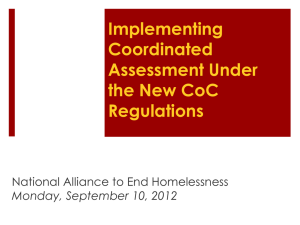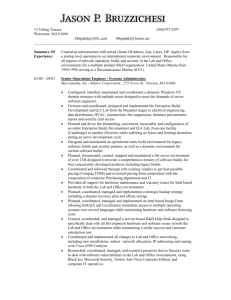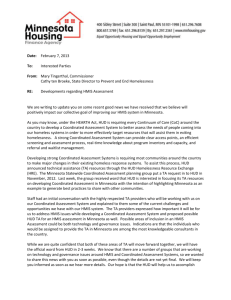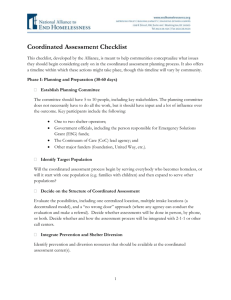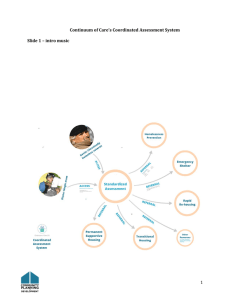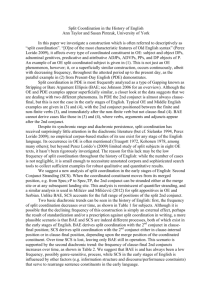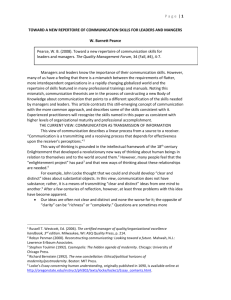Coordinated Assessment - Minnesota Coalition for the Homeless
advertisement
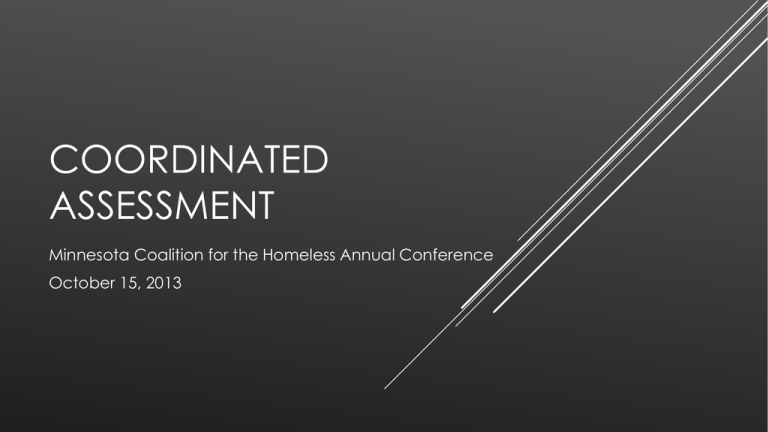
COORDINATED ASSESSMENT Minnesota Coalition for the Homeless Annual Conference October 15, 2013 WHY DO SHOULD WE WANT COORDINATED ASSESSMENT? • • • • • • More quickly identify the right fit for clients Improve system efficiency Enhance system-wide prevention & diversion opportunities Foster collaboration among providers Improve performance (HEARTH) HUD mandate (CoC/ESG) COORDINATED ASSESSMENT CORE COMPONENTS Standardized Access and Assessment Access Assess Coordinated Referral Assign/ Refer ACCESS – COORDINATED ENTRY POINT INTO THE COC SYSTEM OF CARE. Your Coordinated Assessment MUST: Cover the geographic area of the CoC Be easily accessed by individuals and families seeking homeless or homelessness prevention services. Be well advertised. COORDINATED ASSESSMENT ACCESS MODELS • Single point of access • Multisite centralized access • Assessment hotlines (211) • No wrong door What works best for your community? ASSESSMENT — COMMON TOOL USED ACROSS CONTINUUM Document the needs of individuals and families seeking housing or services Must use a comprehensive and standardized assessment tool HUD does not require the coordinated assessment to determine eligibility 6 COORDINATED ASSESSMENT BEST PRACTICES FOR ASSESSMENT Document client’s homelessness history and housing barriers Identify appropriate services Document discrepancy between client needs and available resources to meet need Respect client preferences Capture “just enough” data to meet project needs Obtain consent for sharing with providers Draft, or at least initiate, a housing plan Apply standardized practices at every point 7 COORDINATED ASSESSMENT REFERRAL (ASSIGN) Referral provided for housing and/or services for individuals and families experiencing a housing crisis CoC must establish written standards for administering projects, including eligibility criteria No side doors. 8 COORDINATED ASSESSMENT — REFERRAL • Accurate • Comprehensive • Informed • Electronic • Effective • Mandatory • Standardized 9 COORDINATED ASSESSMENT PLANNING STEPS Community engagement Program standards System mapping Assessment tool Referral process Implementation Evaluation COORDINATED ASSESSMENT — SO, WHAT IS HAPPENING IN MINNESOTA?
